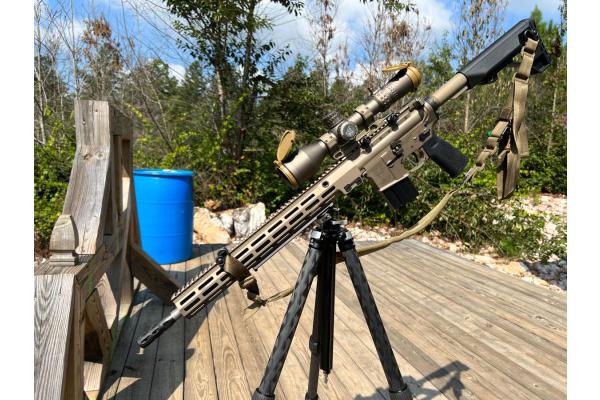How to set up your AR rifle for deer, predators and other game -
The great ergonomics, light weight, and cartridge selection are a few of the reasons why the AR-15 is a fine choice for a hunting rifle.
While the AR-15 isn’t the most popular rifle for hunting, its prevalence in hunting camps and deer stands increases every year.
Here are a few things to consider before heading to your hunting camp with one over your shoulder.
Best AR-15 Hunting Rounds
Which cartridge to shoot is an important decision.
Shoot whatever you like and whatever is cheap if you’ll be hunting varmints. The .223 Remington would be my top pick because ammunition is relatively affordable and readily available. Shoot a .204 Ruger if you want to be fancy.
The .223 Remington is also a good choice for predators, but so is the 6mm ARC. For deer, antelope, and hogs, my tops picks are 6mm ARC, 6.5 Grendel, and .300 Blackout (in supersonic form).
Configuring an AR-15 For Hunting
Turning to the rifle, there are a couple basic decisions that will pay huge dividends in the field. A long handguard that free-floats the barrel is a great idea if there’s a possibility of shooting beyond 200 yards.
Not only does free-floating improve accuracy, but it will also ensure a consistent point of impact.
Longer handguards are better because they give the shooter more real estate when resting the forend on tree limbs, rocks, and backpacks.
Field supports can be almost any shape, so not having to crowd up on it to rest the rifle’s forend is a huge blessing.
Consider attaching an ARCA rail to the underside of the forend.
This gives a flat surface when using a bag or backpack up front, but the main benefit is the ability to quickly attach the rifle to a tripod.
Tripods are light weight and can be used in any number of shooting positions.
I’ve used them in deer blinds and as standalone supports in the field and the utility of a good tripod cannot be overstated.
Upgrading your AR15 Trigger
Ditch the “mil-spec” trigger, if the rifle came with one. A trigger with a pull weight of less than four pounds is a good idea for hunting.
Heavy pull weights require more shooter effort to release and that will often disturb the shooter’s point of aim. It’s hard to hold a light rifle steady when fighting a 6-pound-plus pull weight.
It’s also easy to pull the entire rifle away from the point of aim when the sear releases and the trigger moves through the overtravel.
The best way to check how destructive a trigger is to AR precision is to dry fire from the shooting bench.
Watch the crosshairs to see how much they move when the trigger releases the sear.
If the crosshairs bounce or jump, that’s a strong indicator that a better trigger is in order.
Scope Up Your AR-15
Optic selection for a hunting rifle will depend on the animal hunted and the expected ranges.
In almost all cases, a second focal plane (SFP) scope is the best choice for a hunting rifle.
This advice will fly counter to the current love affair with first focal plane reticles and those scopes, but SFP is the way to go for hunting.
SFP reticles are readily visible at any magnification and most hunting scopes are going to spend (or should spend) most of the time at the lower end of the magnification range.
If an animal pops up at 50 yards and the scope is at high magnification, it’ll be gone before you can dial it down. I keep mine at minimum magnification until I’m looking at the animal through the scope.
The rule is: there’s always time to turn magnification up, but there’s never time to turn it down.
My top pick would be a SFP 2.5-20x50mm, like the one seen here.
The AR-15 is the most popular rifle in America, so it’s no surprise they’re gaining popularity with hunters. The principles laid out here will help make sure yours is ready for the field.
